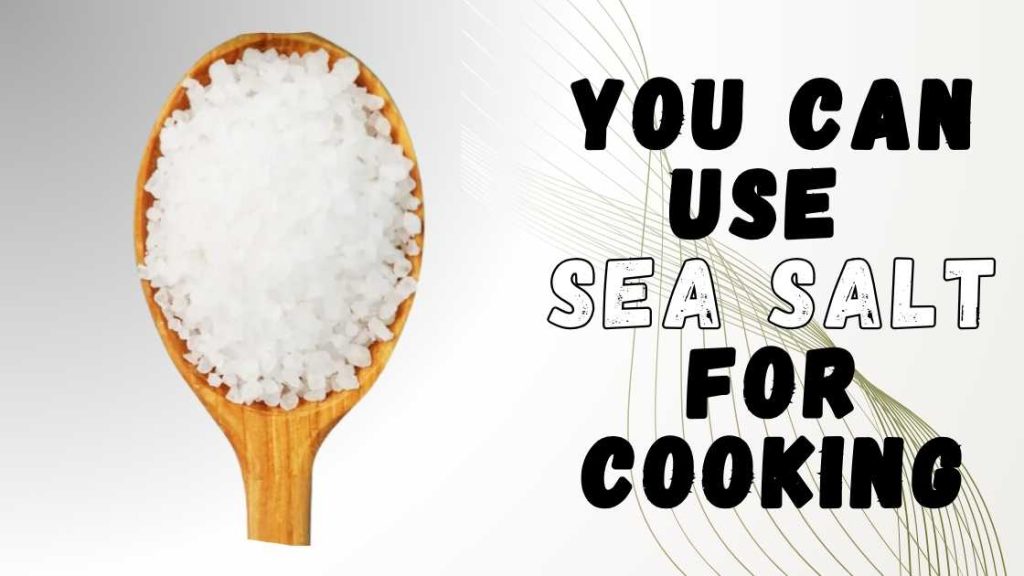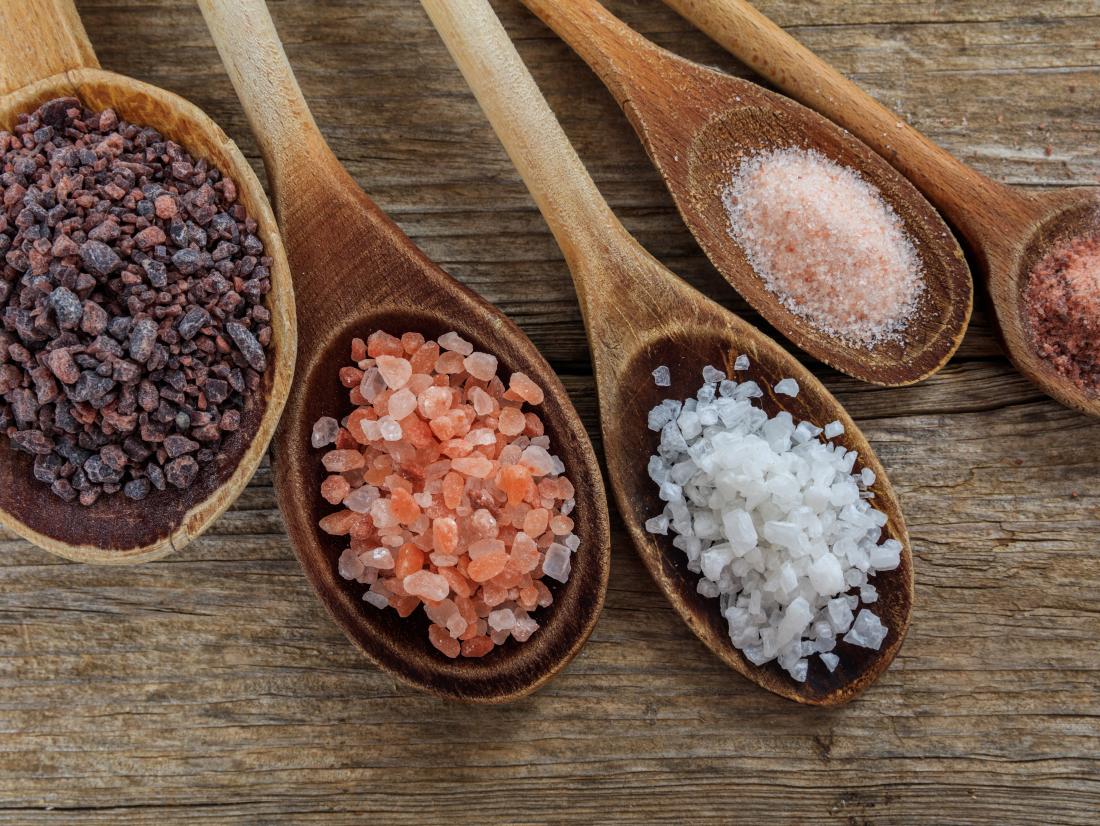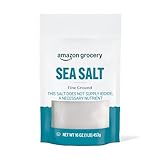Yes, you can use sea salt for cooking. Sea salt is a versatile ingredient used in many dishes, from salads to gourmet meals.
In my experience, sea salt works exceptionally well in dishes where you want to add texture or a burst of flavor. For example, I often sprinkle sea salt over roasted vegetables or grilled meats just before serving. The sea salt crystals are large and unevenly shaped. They give a nice crunch and melt slowly, which lets the flavors develop slowly on the tongue.
| Nutrient/Characteristic | Sea Salt (per 1g) | Table Salt (per 1g) |
|---|---|---|
| Sodium | 380 mg | 400 mg |
| Magnesium | 1 mg | 0 mg |
| Potassium | 1 mg | 0 mg |
| Calcium | 1 mg | 0 mg |
| Trace Minerals | Yes | No |
| Texture | Coarse/Flaky | Fine |
| Flavor | Complex, Subtle | Sharp, Intense |

What is Sea Salt?
Sea salt is a natural form of salt that is harvested through the evaporation of seawater. Sea salt keeps important minerals like magnesium, potassium, and calcium, while table salt removes them through heavy processing. Sea salt can have different textures and flavors based on where it comes from, which is why chefs like to use it.
Why Sea Salt is Ideal for Cooking
Sea salt is harvested from evaporated seawater, retaining trace minerals such as magnesium, potassium, and calcium. Sea salt gets its unique flavor from minerals, which make it taste more complex and subtle than table salt. Chefs and home cooks love it because it enhances natural flavors without overpowering them.
Sea salt has less sodium than table salt, so it’s a healthier choice for people trying to cut down on sodium without giving up flavor. Using sea salt for cooking is cost-effective despite being more expensive than table salt because a small amount is sufficient.
Using Sea Salt for Cooking
Sea salt is a versatile and flavorful ingredient that can elevate many dishes. Here’s how you can make the most of it in your cooking:
Types of Sea Salt

Credit: www.medicalnewstoday.com
- Fine Sea Salt: Good for general cooking, seasoning, and baking. It dissolves easily and can be used just like table salt.
- Coarse Sea Salt: Ideal for finishing dishes, seasoning meats, or adding a crunchy texture. It doesn’t dissolve as quickly, so it adds bursts of flavor.
- Flaky Sea Salt (like Maldon): A delicate finishing salt that’s great for sprinkling on top of dishes like salads, grilled vegetables, or chocolate desserts. It adds a light, crispy texture.
Best Uses of Sea Salt
- Seasoning Meat and Fish: Use coarse or flaky sea salt to season meat or fish before cooking. It helps draw out moisture and enhances the natural flavors. For a crispy crust, apply sea salt just before grilling or pan-searing.
- Vegetables: Roast or sauté vegetables with a sprinkle of sea salt. Coarse sea salt works well with roasted veggies, while fine sea salt is great for sautéed greens.
- Pasta and Grains: Add fine sea salt to the boiling water for pasta, rice, or quinoa. This is a critical step as it flavors the grains from the inside out.
- Baking: Fine sea salt can replace table salt in baking recipes. Flaky sea salt is perfect for finishing cookies, brownies, or caramel desserts.
- Salads: A pinch of flaky sea salt on top of a salad can enhance the flavors of fresh vegetables and dressings.
- Caramel and Chocolate: A sprinkle of flaky sea salt on chocolate desserts or caramel adds a contrast that enhances sweetness.
Cooking Tips
- Measure Wisely: Sea salt crystals are larger than table salt, so if you’re substituting it in recipes, use slightly less if it’s coarse or flaky. For fine sea salt, you can usually use a 1:1 ratio.
- Taste as You Go: Sea salt’s flavor can be more pronounced, so it’s best to add it in stages and taste as you cook.
- Use It as a Finishing Touch: Sea salt, especially the flaky kind, shines when added just before serving, where its texture and flavor can stand out.
Sea salt can add depth and complexity to your dishes, so experiment with different types and see how they can enhance your cooking!
Culinary Uses of Sea Salt
Sea salt is a versatile ingredient in the kitchen, and its unique texture and flavor can enhance a wide variety of dishes. Here’s a breakdown of the culinary uses of sea salt:
1. Seasoning
- Meats and Seafood: Sea salt is excellent for seasoning meats and seafood before cooking. Coarse sea salt is often used to create a crust on steaks, fish, or roasted meats, helping to seal in moisture and flavor. Fine sea salt can be used to season evenly.
- Vegetables: Roasted or grilled vegetables benefit from a sprinkle of sea salt to enhance their natural sweetness and add a savory depth.
- Salads: Flaky sea salt can be sprinkled on top of salads just before serving to add texture and a burst of flavor.
2. Cooking
- Boiling Water for Pasta and Grains: Adding sea salt to boiling water before cooking pasta, rice, or grains is essential. It seasons the food from within, creating a more flavorful dish.
- Baking: Fine sea salt is often used in baking recipes to balance sweetness and enhance other flavors. Flaky sea salt can be sprinkled on top of baked goods like cookies, brownies, or bread just before baking for added texture and flavor.
3. Finishing Salt
- Garnishing: Flaky sea salt is commonly used as a finishing salt. Sprinkling it on dishes just before serving can enhance flavors and add a pleasing crunch. This works well with meats, vegetables, and even desserts.
- Desserts: Sea salt, especially in its flaky form, pairs wonderfully with sweet dishes. It’s commonly used on chocolate, caramel, and toffee to create a balanced sweet-and-salty flavor.
4. Pickling and Preserving
- Brining: Sea salt is a key ingredient in brines for pickling vegetables, curing meats, or making homemade gravlax. The salt draws out moisture, firms the texture, and adds flavor.
- Curing: Sea salt is used in the process of curing meats and fish, helping to preserve them while adding a deep, savory flavor.
5. Flavor Enhancer
- Marinades and Rubs: Sea salt is often mixed with herbs, spices, and oils to create flavorful marinades and dry rubs for meats and vegetables.
- Sauces and Dressings: Incorporating sea salt into sauces, dressings, and dips helps to bring out the flavors of the other ingredients.
6. Healthier Alternative
- Natural Minerals: Sea salt is often touted as a healthier alternative to table salt because it retains more natural minerals. These minerals can contribute to the overall flavor and nutritional value of your dishes.
7. Beverages
- Cocktails: A pinch of sea salt can be used to enhance the flavor of cocktails, such as margaritas. It balances the acidity and brings out the sweetness in drinks.
8. Texture and Mouthfeel
- Crunchy Toppings: Coarse or flaky sea salt can be used as a crunchy topping for dishes like avocado toast, roasted nuts, or artisan bread. The texture adds an extra dimension to the eating experience.
9. Specialty Uses
- Salt Crust Cooking: A method where meat or fish is baked within a crust of sea salt, which helps retain moisture and imparts a delicate flavor. The salt crust is cracked open just before serving.
- Herbed or Infused Salts: Sea salt can be mixed with herbs, spices, or citrus zest to create flavored salts that are used to season dishes uniquely.
Using sea salt creatively in your cooking can elevate the flavors and textures of your dishes, adding a gourmet touch with minimal effort.
How Does Sea Salt Differ from Table Salt?
Sea salt differs from table salt in both taste and texture. Table salt is highly processed, often with added anti-caking agents, and is usually finer in texture. It is also iodized, meaning iodine is added to prevent iodine deficiency. On the other hand, sea salt is less processed, with larger crystals and a more natural flavor. It contains trace minerals that are often removed during the processing of table salt, giving it a unique taste that many chefs and home cooks prefer.
Is Sea Salt Healthier Than Table Salt?
While sea salt contains trace minerals, these are present in very small amounts, so the overall nutritional difference between sea salt and table salt is minimal. The main difference lies in taste and texture. Both sea salt and table salt contain sodium, which should be consumed in moderation. However, some people prefer sea salt for its natural origin and minimal processing.
Can You Use Sea Salt for Baking?
Yes, sea salt can be used for baking, but it’s important to note that the texture and grain size can affect the outcome of your baked goods. If a recipe calls for table salt and you substitute sea salt, you may need to adjust the quantity, as sea salt’s larger crystals may not dissolve as easily. To avoid altering the taste or texture of your baked goods, consider grinding sea salt into finer grains or using it in recipes where a coarse texture is desirable.
How Should You Store Sea Salt?
Sea salt should be stored in a cool, dry place to prevent it from clumping due to moisture absorption. It’s best to keep sea salt in an airtight container to maintain its texture and prevent it from absorbing odors or moisture from the environment. Proper storage will help preserve its flavor and ensure it remains free-flowing for use in cooking.
Can Sea Salt Be Used in All Cooking Methods?
Sea salt can be used in most cooking methods, including boiling, roasting, grilling, and seasoning. Its coarse texture makes it especially popular for finishing dishes, where it can add a burst of flavor and a satisfying crunch. However, when used in recipes where salt needs to dissolve fully, such as in baking or making sauces, you may need to adjust the quantity or grind the salt to a finer consistency.
Is Sea Salt More Expensive Than Table Salt?
Yes, sea salt is generally more expensive than table salt due to the way it is harvested and processed. The natural evaporation process used to create sea salt is more time-consuming and labor-intensive, which contributes to its higher price. Additionally, the unique flavors and textures of sea salt can make it a premium ingredient in cooking, justifying the higher cost for those who prefer its qualities.
Final Decision
Sea salt is a fantastic option for cooking, thanks to its unique flavor, texture, and retained minerals. Whether you’re a professional chef or a home cook, using sea salt can elevate your culinary creations. Just remember to adjust your measurements accordingly and enjoy cooking with this natural and flavorful ingredient.

I may be a little “crazy” when it comes to cooking, but I enjoy every minute of it. Spending time in the kitchen itself, whether with my family or my friends, brings me both happiness and exhilaration. This blog was created to showcase my cooking/eating with family and friends. And also as an opportunity to discuss ideas on food and the culinary circle in general.




